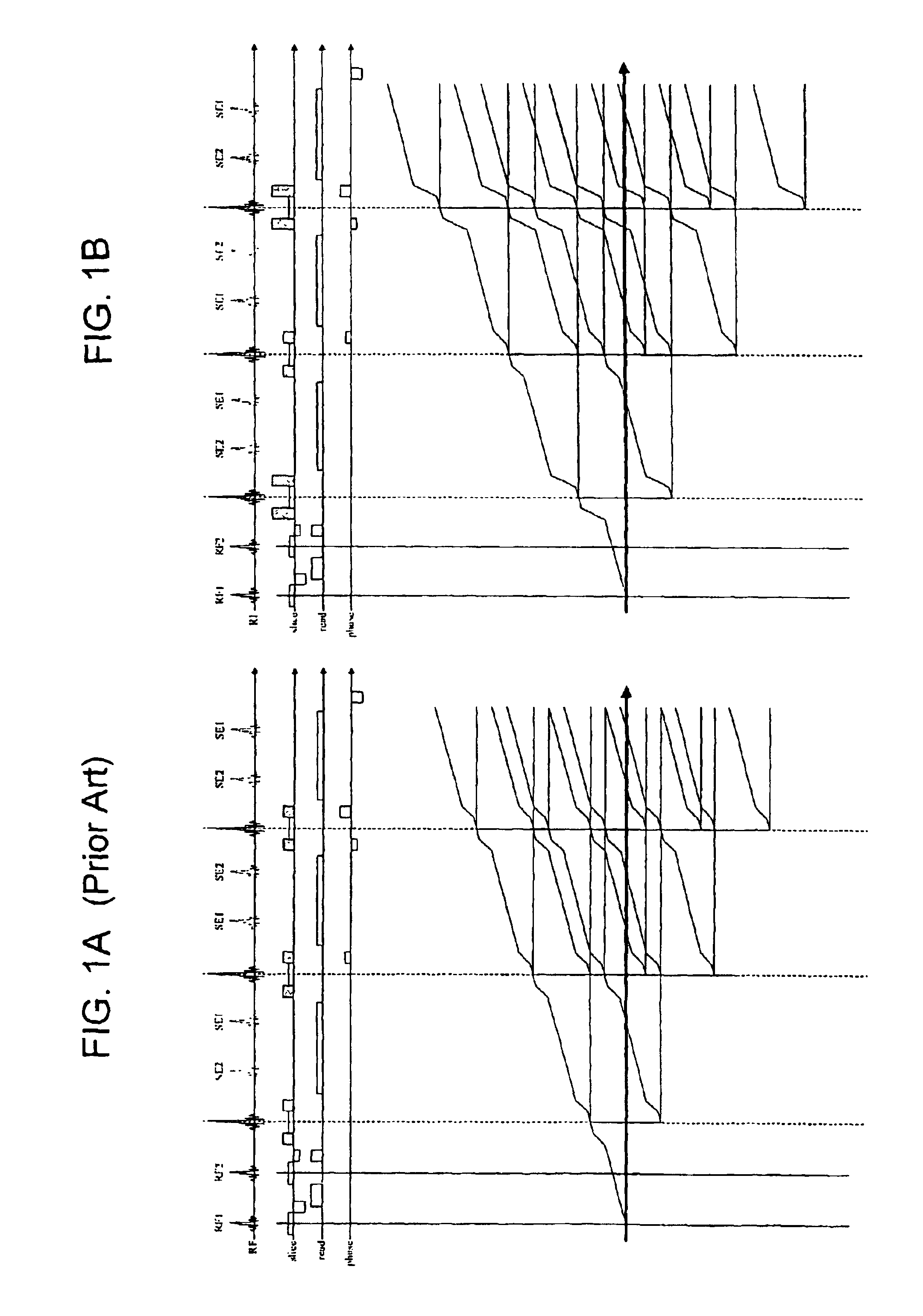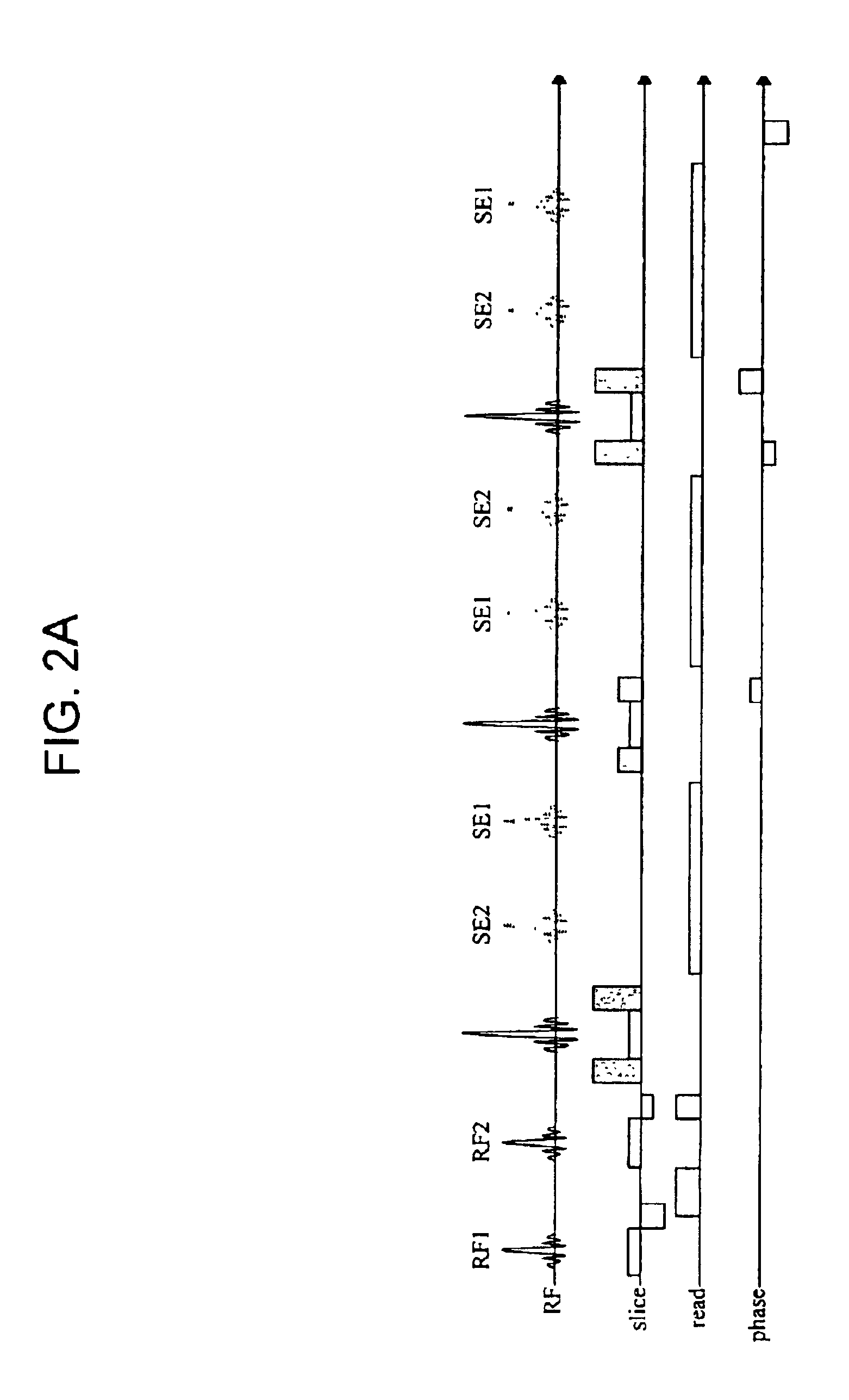Method and apparatus for removing specific stimulated echoes in simultaneous image refocusing
a technology of refocusing and specific stimulation, applied in the field of magnetic resonance imaging, can solve the problems of increasing the heating of the subject, increasing the spacing of the rf refocusing pulse, and suppressing all the stimulated echo pathways efficiently but is usually, so as to reduce the penetration of rf, increase the spacing of the rf refocusing pulse, and increase the mri field strength
- Summary
- Abstract
- Description
- Claims
- Application Information
AI Technical Summary
Benefits of technology
Problems solved by technology
Method used
Image
Examples
Embodiment Construction
FIG. 1A illustrates a multiple slice SE pulse sequence using the SIR approach discussed in the referenced 1999 patent application and also using known spoiling of fid artifacts. RF pulses RF1 and RF2 on the RF axis excite two respective MRI slices S1 and S2 defined by the illustrated pulses on the slice select axis, and are followed by a 180° pulse on the RF axis. In order to provide SIR benefits, the read axis gradients pulses include a first pulse that is temporally between the two RF pulses, and a second pulse that is temporally between the second RF pulse and the first 180° pulse. Spin echo MRI signals follow in time as illustrated, with an additional 180° RF pulse after each pair of MRI echo signals. The spoiling pulses on the slice select axis, shown as shaded blocks, temporally flank each 180° pulse to provide known spoiling of fid artifacts.
FIG. 1B illustrates a novel approach of varying the amplitude of the spoiling pulses on the slice axis. As illustrated, the amplitude is...
PUM
 Login to View More
Login to View More Abstract
Description
Claims
Application Information
 Login to View More
Login to View More - R&D
- Intellectual Property
- Life Sciences
- Materials
- Tech Scout
- Unparalleled Data Quality
- Higher Quality Content
- 60% Fewer Hallucinations
Browse by: Latest US Patents, China's latest patents, Technical Efficacy Thesaurus, Application Domain, Technology Topic, Popular Technical Reports.
© 2025 PatSnap. All rights reserved.Legal|Privacy policy|Modern Slavery Act Transparency Statement|Sitemap|About US| Contact US: help@patsnap.com



